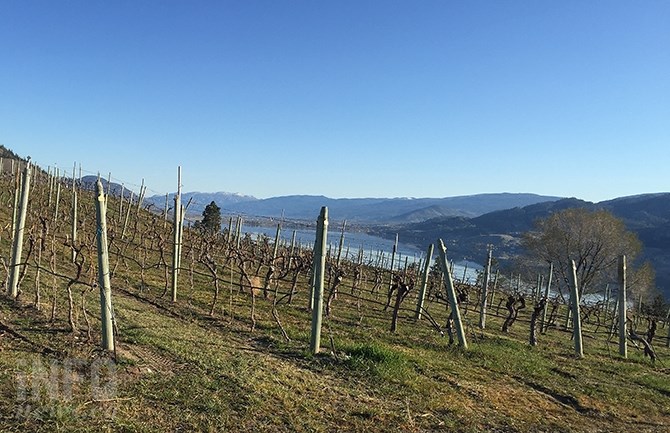Devastating grape freeze expected to hammer wineries in the Okanagan

More than half the grapes grown in the Okanagan may be lost this summer due to last fall’s killer frosts.
While that’s tough on the growers, they do have crop insurance and government supports.
“Growers can live for another day, that’s farming,” Miles Prodan, president and CEO of the B.C. Wine Institute told iNFOnews.ca. “But, if you don’t have grapes to make wine, what happens at the winery? That is a question we don’t have an answer to. How do you keep viable if you don’t have grapes to process to make wine?”
The wineries themselves don’t have the same kind of insurance and government supports as growers do although, in many cases, wineries grow some or all of their own grapes.
While buds won’t be visible on the grape vines for a couple of weeks yet, the extent of the deep freeze last fall – with temperatures below -20 Celsius – led the Wine Institute to do bud dissection sampling throughout the valley to assess the extent of the damage.
That damage is extensive with and estimated 39% to 56% reduction in production expected, although it varies widely based on location and variety.
Grapes for white wines weathered the winter better but some varieties of red have been hit hard. The malbec crop is estimated to be down by 97-98%, Syrah by 95-96%, merlot by 75-76% and cabernet sauvignon by 71-72%.
READ MORE: Proposed tea house to add unique flavour to West Kelowna Wine Trail
For white grapes, the damage to pinot gris is estimated to be in the 1-20% range and, to gewurztraminer, in the 0-26%. Damage to other varieties was greater. The Riesling crop is estimated to be down 27-58% and chardonnay by 36-52%.
The grape vines actually have three buds, Prodan explained. Normally the first bud produces the grapes. If that fails, the second bud will still produce fruit.
In either case, the quality of the grapes produced will not be impacted by last fall’s freeze but will be influenced by the course of the weather through the fall.
If only the third bud survives, it will put out a runner and no fruit. In the worst cases, some of the plants may have been killed.
Since VQA wine is made from 100% B.C. grapes, no imported fruit can be used.
That means wineries are going to have to make tough choices on where to sell the wine they do produce this year, whether that be in liquor stores, restaurants or at the farmgate.
And they won’t likely be able to boost prices due to short supplies because the wine industry is so competitive that the laws of supply and demand don’t really apply.
It will be another month before the full extent of the damage will be known.
At this time, it looks like the Osoyoos area was hit the hardest but the range of estimates is wide, 55-71% there. Damage to vines in Lake Country and Vernon are estimated at 49-73%, West Kelowna 44-71% and Kelowna at 43-71%
Prodan encourages growers to do their own bud dissections to evaluate the extent of damage in their vineyards.
A similar cold snap last winter only hit the Central Okanagan so this is the first time damage has been so widespread.
In addition, ageing vines have meant the grape crop has already declined by about 30% the in last five or six years, Prodan said.
The industry is encouraging the province to bring in a replant program.
To contact a reporter for this story, email Rob Munro or call 250-808-0143 or email the editor. You can also submit photos, videos or news tips to the newsroom and be entered to win a monthly prize draw.
We welcome your comments and opinions on our stories but play nice. We won't censor or delete comments unless they contain off-topic statements or links, unnecessary vulgarity, false facts, spam or obviously fake profiles. If you have any concerns about what you see in comments, email the editor in the link above.


